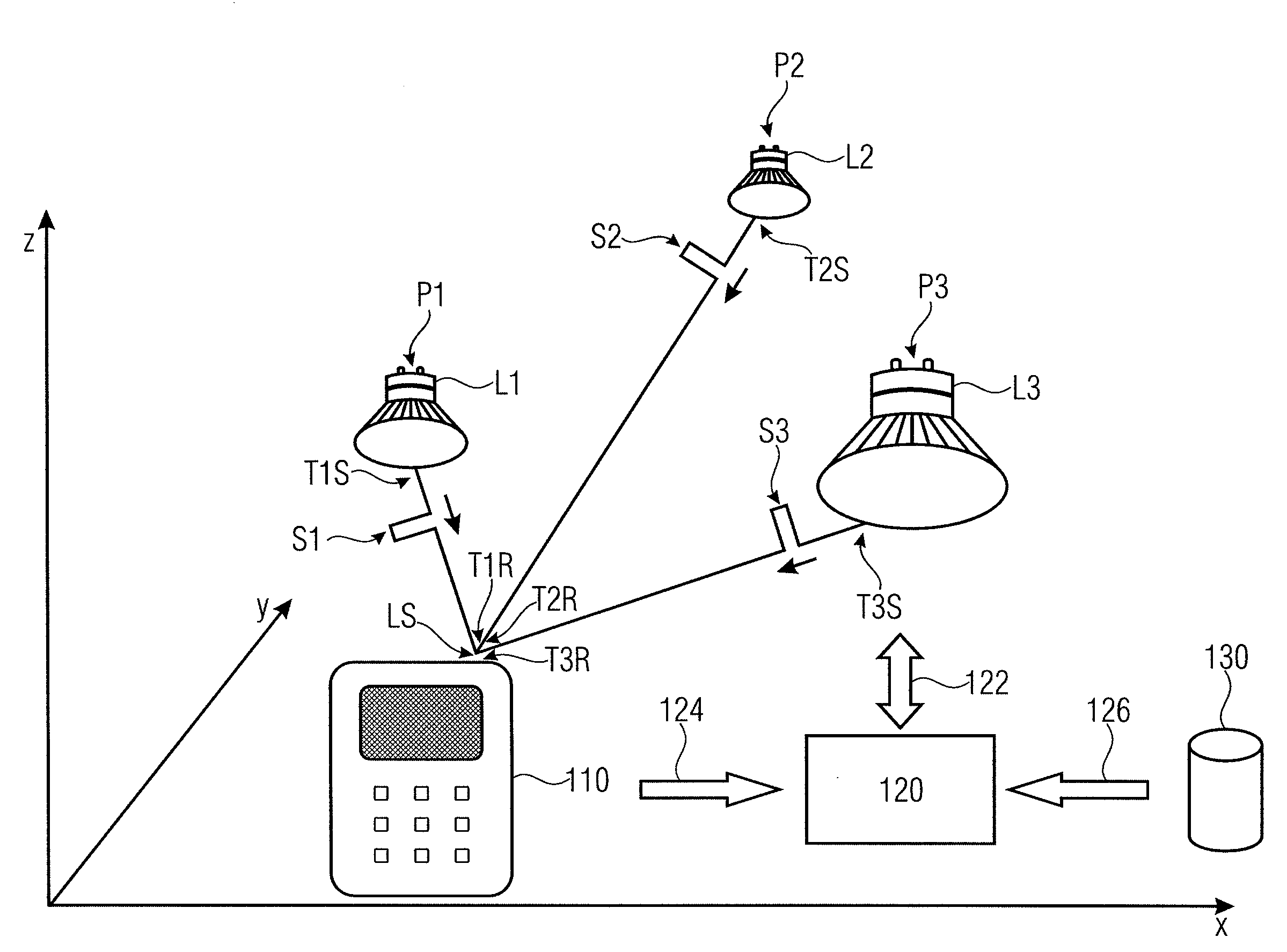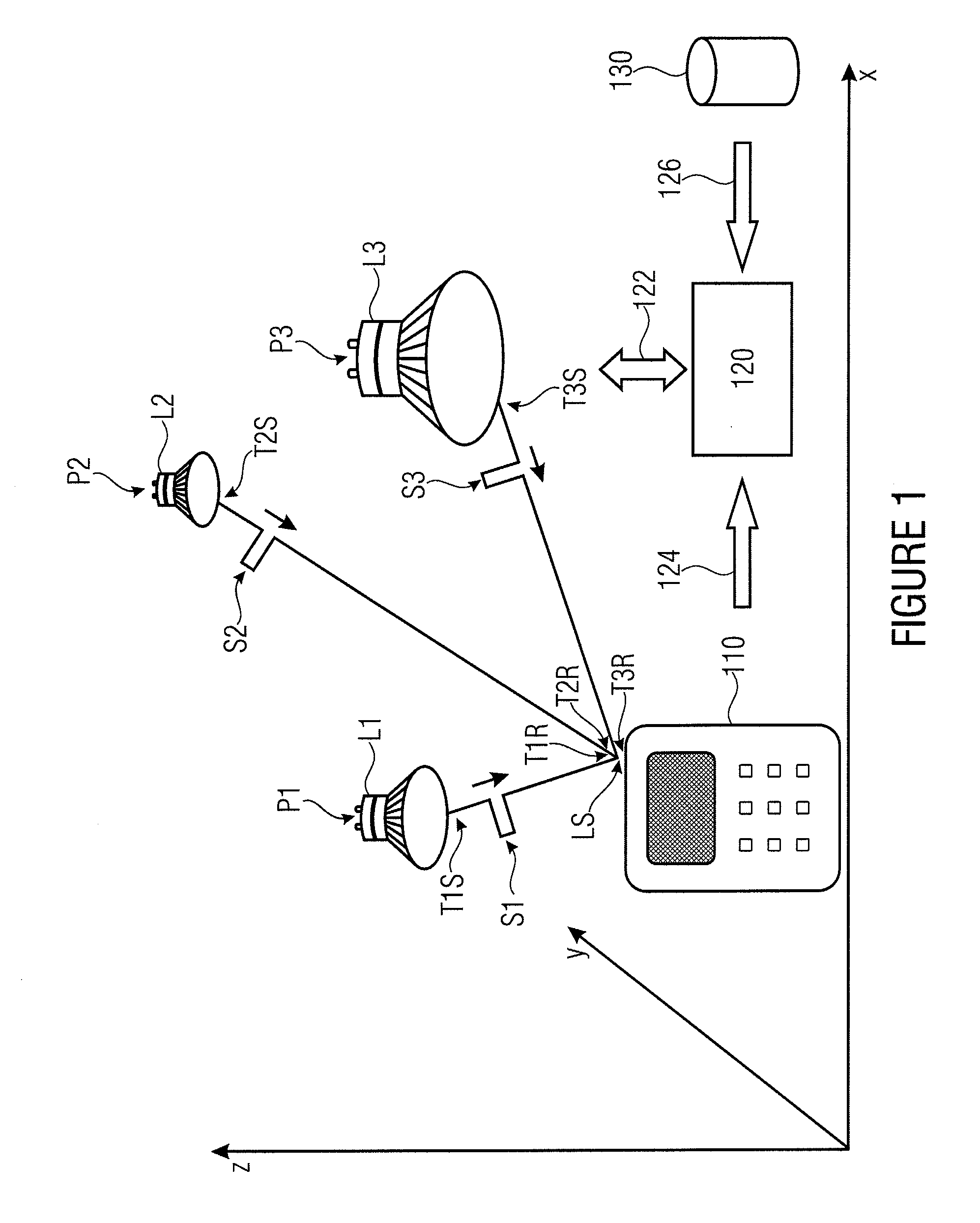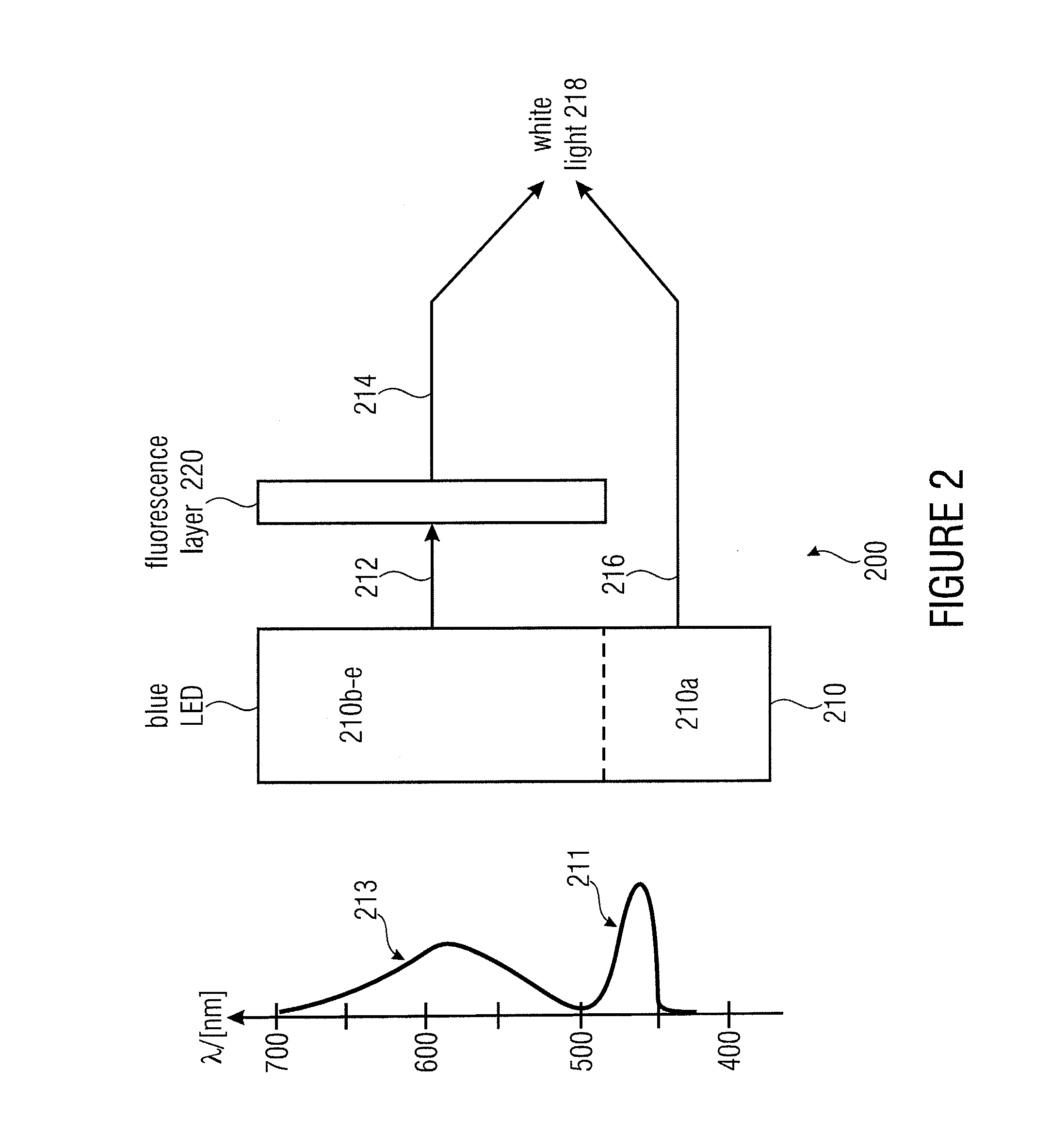System and method for determining a position of a movable object, arrangement of general lighting LED and light sensor for a position determination of a movable object
a technology of movable objects and systems, applied in the direction of position fixation, wave based measurement systems, instruments, etc., can solve the problems of not monitoring the same permanently and in real time, enabling punctual detection of the stream of goods, and blurring of the signal edges of modulated led lights, so as to achieve simple technical realization, increase communication security, and reduce the effect of eavesdropping
- Summary
- Abstract
- Description
- Claims
- Application Information
AI Technical Summary
Benefits of technology
Problems solved by technology
Method used
Image
Examples
Embodiment Construction
[0042]In the following description of the embodiments, for like or seemingly like elements the same reference numerals are used.
[0043]In the following, embodiments with fluorescence LEDs as general lighting LEDs are described. The explanations, however, apply accordingly for other embodiments for example with RGB LEDs as general lighting LEDs.
[0044]FIG. 1 shows a schematical illustration of an embodiment of a system for determining a position of a moving object 110, wherein the system comprises an arrangement of three fluorescence LEDs L1 , L2 and L3, a light sensor LS mounted to the moving object and an evaluation unit 120. Optionally, the system may also comprise a data base 130.
[0045]The fluorescence LEDs L1 to L3 are, for example, integrated in the ceiling, a wall or other objects of the environment or mounted to the same and each have a defined, known and fixed position P1 to P3. The positions P1 to P3 are different for example to be able to determine the position of the object...
PUM
 Login to View More
Login to View More Abstract
Description
Claims
Application Information
 Login to View More
Login to View More - R&D
- Intellectual Property
- Life Sciences
- Materials
- Tech Scout
- Unparalleled Data Quality
- Higher Quality Content
- 60% Fewer Hallucinations
Browse by: Latest US Patents, China's latest patents, Technical Efficacy Thesaurus, Application Domain, Technology Topic, Popular Technical Reports.
© 2025 PatSnap. All rights reserved.Legal|Privacy policy|Modern Slavery Act Transparency Statement|Sitemap|About US| Contact US: help@patsnap.com



